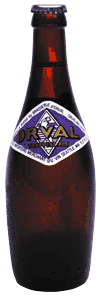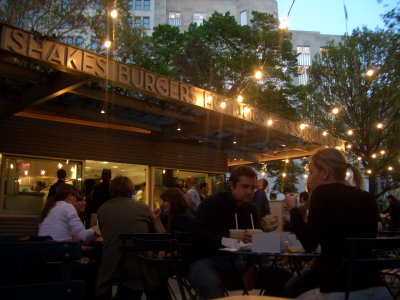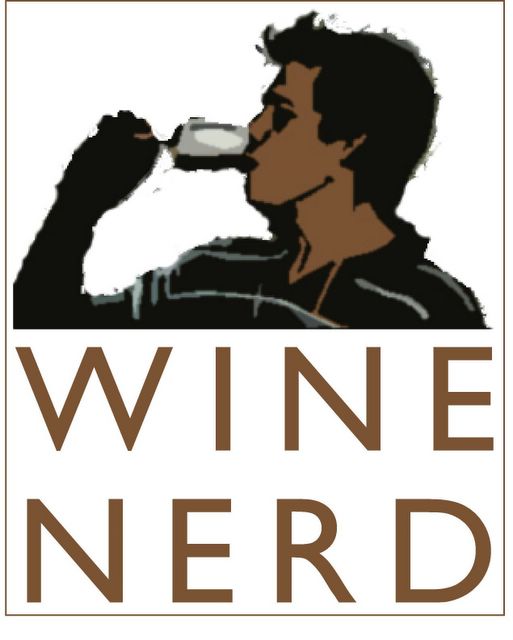February is perhaps the worst of the winter, so nothing like a few smokin' wines to help cheer one up...
Domaine Lafage Blanc 2004Varietal: 45% Grenache Blanc, 48% Grenache Gris, 7% Macabeo
Region: Roussillon, France
Price: $9.99
Importer: European Cellars
The Roussillon is a great area for value wines. There are some superbly skilled winemakers crafting a few hundred bottles of something amazing and then several wineries that produce crisp, fruity whites and soft, supple reds that make great everyday drinkers. In the far Southwest, close to Spain, the region considers itself independent almost, and more Roussillon that French!
Stellar importer Eric Solomon, whose company European Cellars brings in some of the best wines from Europe, imports Domaine Lafage. The estate is home to winemaker Jean-Marc Lafage, who has a hand in several of Eric Solomon’s winery interests – a testament to his talent and knowledge. His Lafage Blanc is the epitome of a crisp and fresh white from Southwest France. The wine bursts with citrus and floral notes on a backbone of clean minerality. A touch of sweet peach on the finish acts as the hook to lure you in for another sip.
Makes an excellent aperitif wine, served with antipasto like olives, mixed cheeses and hummus-like spreads. Would be delicious with baby-octopus salad, steamed mussels, lightly seared tuna or a fresh garden salad.
Boggy Creek Pinot Gris 2002Varietal: Pinot Gris
Region: King Valley, Australia
Price: $15.99
Importer: Bouquet du Vin
I discovered this at Wine Australia – a tasting of several hundred Australian wines held in New York in January this year. The event was well done, with the wines laid out alongside appropriately designated foods prepared by various New York City restaurants. A good evening! Check www.wineaustralia.com for information on future events.
Pinot Gris is known mostly by the name Pinot Grigio used for the popular-selling Italian wine. Those accustomed to Pinot Grigio will be a little surprised by this Pinot Gris from Australia. It is not light, crisp and simple. Instead, the Boggy Creek Pinot Gris is exceptionally rich and full-bodied for this varietal. This profile is mainly due to fermentation and maturation in old French oak barrels for up to 10 months. With a dark hue and a nice sweet kiss on the finish, it reminded me more of a good Chenin Blanc or Alsatian Pinot Gris than any Pinot Grigio.
Because of the rich, mineral and slightly smoky character, this wine would be delicious with grilled firm fish like swordfish, monkfish or grouper, or with a smoked chicken or duck salad. An herb-roast chicken or simple pasta with olive oil, garlic and sage would be delicious with this too.
Snoqualmie Naked Riesling 2004Varietal: Riesling
Region: Washington, USA
Price: $ 10.99
Washington state has some of the best wine country in the US. Contrary to what many believe, most of the state is dry and very suitable to wine production – since the Cascade Mountain keeps all the rain in the Seattle area. Hence it is now the second biggest wine producing state, and has over 30,000 acres of vineyards. Areas like Walla Walla produce coveted Syrah and Pinot Noir that competes with the best California has to offer.
Situated in the Columbia Valley, Snoqualmie released their first wine in 1984, with female winemaker Joy Andersen at the helm since 1991 and has gained a following for her elegant approach to showcasing true varietal style. The Naked in this wine’s name comes from the fact that they’re grown by organic practices, something Joy is a strong believer in. The wine is fermented in stainless steel to keep the freshness of flavor and preserve natural qualities.
The Riesling has a lovely off-dry palate with some green apple and floral flavors. Overall it is rather soft in style, and doesn’t have the bracing acidity like some of its counterparts from Germany or France, but is a good buy. Enjoy with some soft cheeses, cured meats or Asian inspired fusion dishes like soy-ginger chicken.
Kanonkop Kadette 2003Varietals: Merlot (39%), Cabernet Sauvignon (27%) Pinotage (26%), Ruby Cabernet (6%) and Cabernet Franc (2%)
Region: Stellenbosch, South Africa
Price: $12.99
Importer: Cape Classics
Here’s an interesting wine. It’s a Bordeaux-style red blend with Pinotage. Pinotage is an indigenous grape varietal found only in South Africa. It was actually first created as a hybrid by a South African crossing Pinot Noir with Hermitage(Cinsaut), way back in 1924. This new vine was planted at relatively few wine estates and only gained recognition with the first commercial release, the Lanzerac Pinotage 1959 vintage. After this it has enjoyed mixed success and still only occupies a tiny portion of plantings (approx 7%), with relatively few high quality examples. Within South Africa, the wine has a steady following, but the frequently tannic and slightly bitter style doesn’t appeal to international palates, and only a few have met success in foreign markets. However debate continues amongst winemakers whether it should be embraced as “South Africa’s wine” or dropped so the focus can be on more international varietals.
One solution to the dilemma is the Cape Blend. Such is the name given to a red blend that contains Pinotage. By blending the Pinotage with Cabernet, Merlot and other reds, it allows the flavors to be enjoyed while keeping any unappealing elements in check.
Kanonkop makes the most highly regarded Pinotage in South Africa. The winery focuses exclusively on red wines, and their flagship Pinotage is one of those that wine-lovers around the world appreciate. They have mastered the art of coaxing the juicy, delicious flavors from the grapes, while minimizing anything that would negatively affect the end wine. They ferment the wines in open cement tanks that allow ample contact with oxygen to soften the tannins. Such an approach seems to work magnificently for them and has proven results.
The Kadette is the wine the winemaker made “to enjoy himself.” It has become very popular, since the blend offers a good amount of fruit-forward, soft fruit and red berry flavors, while retaining a classic, balanced style. Not quit austere, but not entirely New World either, the wine appeals to many.
It also makes a fantastic wine for food pairing. Crack a bottle open when you’re grilling some steaks, digging into a beef roast or ideally with game birds like pheasant or quail. Would also be good with some Manchego or other hard cheeses.
Castell del Remei Gotim Bru 2002Varietals: 65% Tempranillo, 20% Merlot, 15% Cabernet Sauvignon
Region: Costers del Segre, Spain
Price: $12.99
Importer: European Cellars
I first tasted this wine at a wine show last year in Rhode Island and was amazed at how ripe and concentrated it was. Many Spanish wines can be a little too dry and unexciting, but this wine hit the mark! Another star from the European Cellars portfolio, and a great example of a value wine from Spain that puts many wines from the US and France (at up to twice the price) to shame.
The Gotim Bru could be considered a modern Spanish red. Like the “Super Tuscans” in Italy, it is a wine that blends an indigenous varietal (Tempranillo) with international varietals like Merlot and Cabernet Sauvignon to create something unique. The wine is certainly Spanish, but with a modern edge. Castell del Remei is located southwest of Barcelona in a temperate area primarily devoted to growing olives. Bordeaux varietals from France were planted in the early 1900’s, and this a part of the estate history, and reflected in the wines today.
The wine has a generous mouthful of fruit, with dark plum and cherry flavors and a luscious, warm sensation on the palate. Good acidity ensures a balanced finish with some Green pepper notes. Enjoy this wine with wholesome winter dishes like osso bucco, lamb curry or steak frites. Serve it slightly below room temperature to accentuate the spiciness.
St. Hallet Faith Shiraz 2002Varietal: Shiraz
Region: Barossa, Australia
Price: $21.99
Importer: Paterno Wines
Ahaa! Finally a big and juicy Barossa Shiraz!! This is the stuff that has truly put Australia on the map, though not always justifiably - at least in my view.
Barossa Valley is a region of rolling hills, varying soils and microclimates that offer a multitude of opportunity for winemakers to create their own unique expression of a wine. Most recognized wineries have several flagship wines, each from specially selected vineyards that consistently produce top-quality grapes. There is also a fairly large amount of older vines in the region, so seeing “Old Vine” on a Barossa Valley wine label is not uncommon. (The Yalumba wine from an earlier Wine Nerd month was from 100 year old Grenache vines) The style of wine is most commonly lush, fruit-forward, ripe and rather chunky! An impressive drinking wine that does best alone in my view.
St. Hallet makes some of the best Barossa wines. Their Faith Shiraz is a great introduction to the region and style, and is very satisfying to drink. Winemaker Stuart Blackwell puts approximately 60 separate parcels of fruit through the fermentation process separately, and then identifies the most unique for special bottlings. His Faith is as he describes, “the quintessential Barossa wine.” It displays dense, rich blackberry and black cherry flavors, a sticky mouth-feel and a peppery finish.
This heavy-hitter needs bold food to match. Try it with St.Louis style BBQ ribs, spicy sausage and Tandoori lamb kebabs. For perhaps the best results, drink after these dishes as your dessert!




